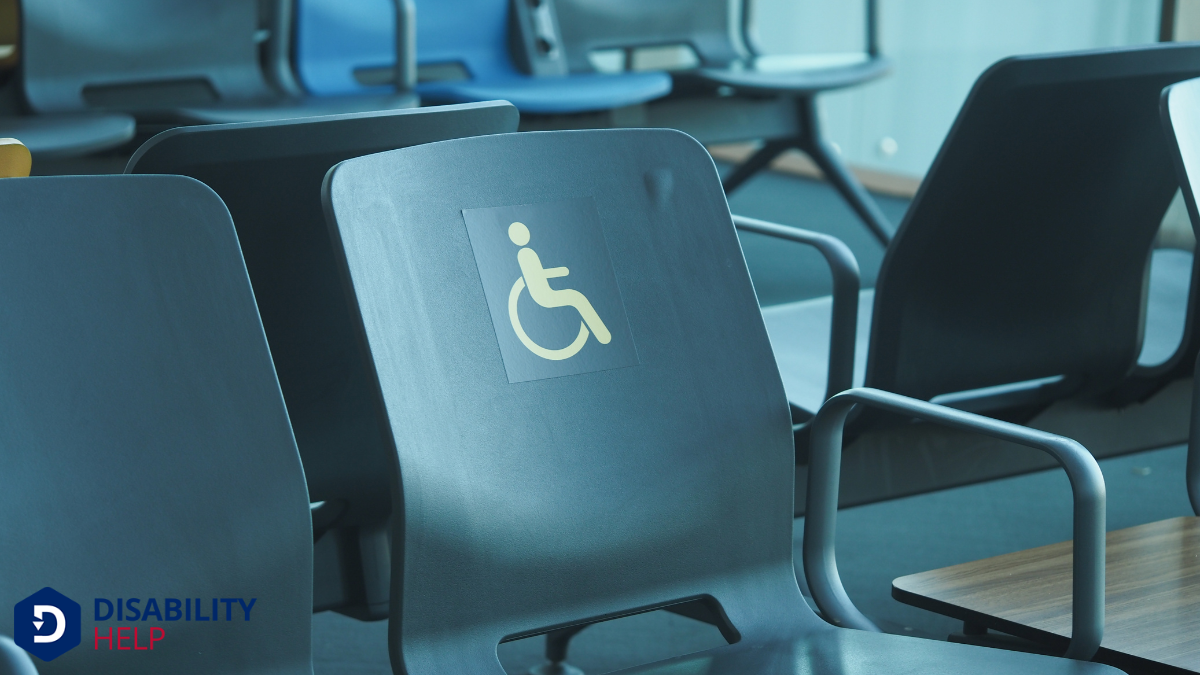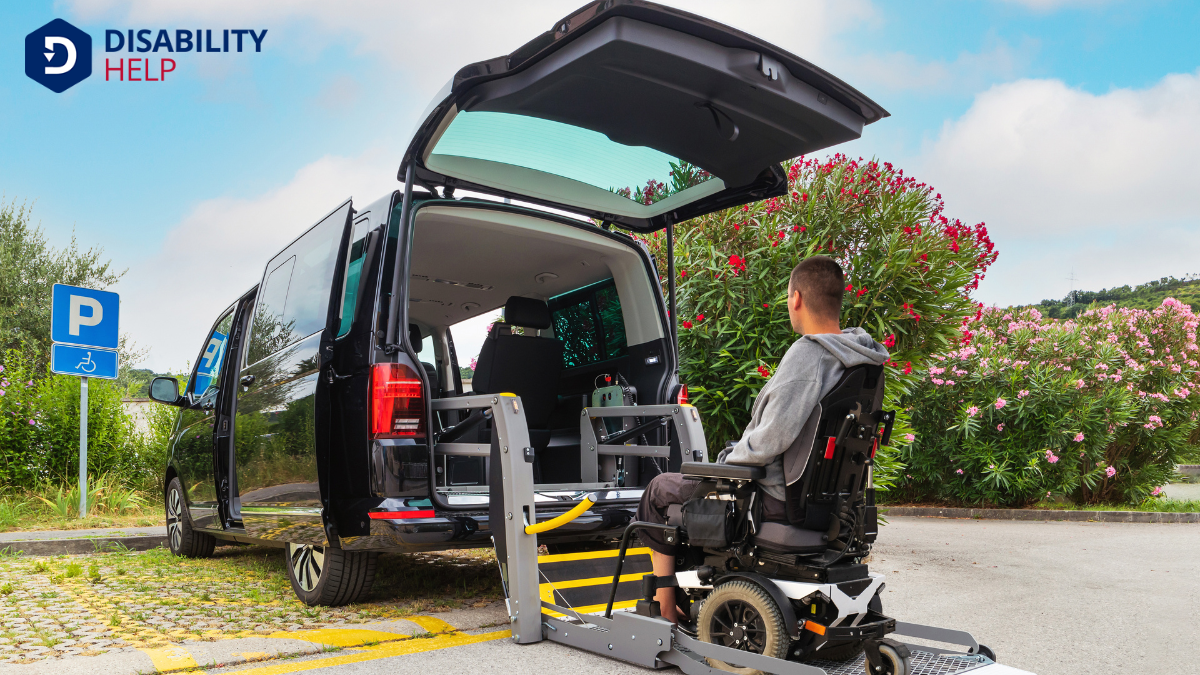When we discuss disability discriminationUnfair treatment of individuals based on their disability in areas such as employment, education, an... under U.S. law, we're diving into a domain where fairness and equality should reign. The Americans With Disabilities Act (ADA) protects individuals with physical or mental impairments that limit major life activities. It's about ensuring equal chances in employment, education, and public services. But what exactly constitutes discrimination, and how do reasonable accommodationsModifications or adjustments in healthcare settings to support patients with disabilities. come into play? Let's explore these vital aspects together.
Key Takeaways
- Disability discrimination occurs when individuals face unfair treatment due to physical or mental impairments.
- Discrimination includes denying reasonable accommodations or equal opportunities in employment and public services.
- Employers cannot ask inappropriate questions about a disability during interviews or job applications.
- Exclusionary job ads that deter candidates with disabilities are considered discriminatory.
- Retaliation against individuals asserting their rights under disability laws is prohibited.
Understanding the Americans With Disabilities Act (ADA)
Although it might seem complex at first, understanding the Americans With Disabilities Act (ADA)A U.S. law that prohibits discrimination against individuals with disabilities in all areas of publi... is essential for guaranteeing equal rights and opportunities for everyone.
As we explore the ADA, we’ll discover it’s a critical law that prohibits discrimination against individuals with disabilities in various areas, including employment, transportation, and public accommodations. The ADA guarantees that people with disabilities have the same rights and access as everyone else, promoting a more inclusive society.
We must remember that the ADA not only protects individuals but also educates us on creating environments that accommodate diverse needs.
By understanding the ADA, we empower ourselves to support and advocate for equal accessThe principle that all individuals, including those with disabilities, should have equal opportunity... and opportunities, fostering a community where all individuals can thrive and participate fully.
Let’s embrace this knowledge and its potential impact.
Definition of Disability Under U.S. Law

When we explore the definition of disability under U.S. law, we uncover a nuanced and specific framework that’s vital for understanding rights and protections.
The Americans with Disabilities Act (ADA) provides a broad definition that includes various conditions. It’s important to grasp how this definition impacts legal rights and obligations, ensuring fair treatment and opportunities.
Key points include:
- Physical or mental impairmentA loss or abnormality of a body structure or function, whether physical, mental, or sensory, often a...: This refers to any condition affecting major life activities.
- Record of impairment: Even if not currently impaired, having a history can qualify.
- Perceived impairment: Being regarded as having a disability, whether or not it's accurate.
- Major life activities: Include activities like walking, speaking, and working.
- Substantial limitation: The condition must substantially limit one or more major life activities.
Understanding these elements helps us advocate for inclusivity and equality.
Recognizing Workplace Discrimination
Let's explore how we can recognize discrimination in the workplace, starting with identifying discriminatory practices that may impact our colleagues with disabilities.
Once we've spotted these issues, it's essential to know how to report unfair treatment effectively and understand the legal protections available to us.
Identifying Discriminatory Practices
How can we recognize workplace discriminationUnfair treatment of employees based on disability, including hiring, promotion, job assignment, term... against individuals with disabilities?
It's essential that we understand what discriminatory practices look like so we can address them effectively. Discrimination occurs when someone is treated unfairly or unfavorably because of their disability.
Let's explore some signs that may indicate discriminatory practices:
- Job Ads: Excluding candidates based on disabilities.
- Interview Questions: Asking about disabilities inappropriately.
- Reasonable Accommodations: Denying necessary adjustments that enable job performance.
- Harassment: Unwanted comments or behaviors targeting someone's disability.
- Unequal Opportunities: Withholding promotions or benefits due to a disability.
Reporting Unfair Treatment
Recognizing discriminatory practices is just the first step; we must also know how to report unfair treatment effectively. When we face or witness discrimination at work, it’s essential to document every detail. We should write down dates, times, locations, and the individuals involved. This documentation supports our claims and provides clarity when recounting events.
Next, we should follow our company’s internal procedures for reporting discrimination. Typically, this involves contacting the human resources department or a designated compliance officer. It's important to express our concerns clearly and concisely, backed by the collected evidence.
If internal steps don’t resolve the issue, we can reach out to external organizations, such as the Equal Employment Opportunity Commission (EEOC), to file a formal complaint.
Legal Protections Available
While workplace discrimination can be disheartening, understanding the legal protections available empowers us. The Americans with Disabilities Act (ADA) is an essential safeguard, guaranteeing that individuals with disabilities have equal opportunities in the workplace. It prohibits discrimination and mandates reasonable accommodations.
Knowledge of our rights allows us to recognize when they're being violated and take appropriate action. Here are key protections under the ADA:
- Equal Employment Opportunity: Guarantees fair treatment in hiring, promotions, and benefits.
- Reasonable Accommodations: Employers must provide necessary adjustments unless it causes undue hardshipA legal concept that refers to significant difficulty or expense imposed on an employer or service p....
- Retaliation Protection: Shields us from punishment for asserting our rights.
- Confidentiality: Protects our medical information from unauthorized disclosure.
- State Laws: Some states offer additional protections, enhancing the ADA's framework.
Reasonable Accommodations in Employment
When discussing reasonable accommodations in employment, it's essential to understand how these adjustments enable employees with disabilities to perform their job duties effectively.
These accommodations might include modified work schedules, assistive technology, or adjustments to the physical workspace. By implementing such changes, we guarantee that all employees have equal opportunities to contribute to the workplace.
Under the Americans with Disabilities Act (ADA), employers must provide reasonable accommodations unless it causes undue hardship.
We must assess each situation individually to determine what adjustments are necessary and feasible. Open communication between employers and employees is key to identifying effective solutions.
Accessibility in Public Services and Spaces

When we think about accessibilityThe design of products, devices, services, or environments to be usable by people with disabilities.... in public services and spaces, we need to focus on ADA compliance standards and how they guide us in creating inclusive environments.
By implementing reasonable accommodationModifications or adjustments to a job or environment that enable a person with a disability to perfo... requirements, we guarantee everyone can access facilities and services without unnecessary barriers.
Let's explore how barrier-free environment initiatives are transforming our communities and promoting equality.
ADA Compliance Standards
Guaranteeing accessibility in public services and spaces is a key focus of the ADA compliance standards, which aim to create more inclusive environments for individuals with disabilities.
We need to understand these standards, as they guide how we design and maintain spaces that are accessible to everyone. The ADA outlines specific requirements for public entities, guaranteeing they provide access without barriers.
Let’s explore some essential elements of ADA compliance:
- Accessible Entrances: Guarantee entrances are usable for people with mobility impairments.
- Signage: Provide clear, readable signs for those with visual disabilities.
- Parking Spaces: Designate and appropriately size accessible parking spots.
- Restrooms: Equip facilities with features like grab barsBars installed in bathrooms or other areas to provide support and prevent falls for those with mobil... and accessible stalls.
- Pathways: Maintain clear, navigable routes throughout buildings.
Reasonable Accommodation Requirements
While understanding ADA compliance standards gives us a framework for accessible design, we must also consider the broader concept of reasonable accommodations in public services and spaces.
These accommodations guarantee that individuals with disabilities can participate fully in community life. They might include providing assistive listening devices in auditoriums, modifying seating arrangements, or offering alternative communication methods.
Our collective responsibility is to identify and implement these adjustments proactively, so barriers don't hinder equal access.
When we think about reasonable accommodations, it’s important to engage in open dialogues with those who need them. By doing this, we can tailor solutions to specific needs, promoting inclusivity.
Let's remember, reasonable accommodations aren't just legal obligations; they're commitments to an equitable society for everyone.
Barrier-Free Environment Initiatives
Creating a barrier-free environment in public services and spaces starts with acknowledging the diverse needs of our communities.
It's essential that we design spaces where everyone can participate and feel included. By doing this, we actively combat disability discrimination and promote accessibility for all.
Let's explore some initiatives that can help us achieve this:
- Ramps and Elevators: Guarantee buildings have ramps and elevators for easy access.
- Signage: Use clear and large-print signs, including Braille.
- Public Transportation: Equip buses and trains with features for mobility aid users.
- Service Counters: Design counters at varied heights to accommodate all users.
- Technology: Implement assistive technology such as hearing loops and accessible websites.
Education and Disability Rights
When it comes to education and disability rightsThe legal and human rights afforded to individuals with disabilities, often the focus of advocacy an..., we must recognize the fundamental role that legislation plays in ensuring equal opportunities for all students. Laws like the Individuals with Disabilities Education Act (IDEA) and Section 504A provision of the Rehabilitation Act of 1973 that prohibits discrimination based on disability in p... of the RehabilitationThe process of helping individuals with disabilities achieve and maintain their optimal physical, se... Act protect students with disabilities from discrimination.
These laws require schools to provide necessary accommodations, ensuring each student receives a Free Appropriate Public Education (FAPE).
We might wonder how these laws impact everyday schooling. In essence, they mandate that schools identify students with disabilities and offer tailored support. This can include anything from modified teaching methods to assistive technology.
Discrimination in Housing and Real Estate
Maneuvering the housing market can be challenging, but it becomes even more complex when discrimination enters the picture. We must understand that disabilities shouldn't limit someone's housing options.
Unfortunately, discrimination can occur in various ways, from landlords refusing reasonable accommodations to real estate agents steering clients away from accessible properties. The Fair Housing Act protects individuals with disabilities, making it illegal to discriminate in housing.
Here are key points to take into account:
- Landlords must make reasonable accommodations for tenants with disabilities.
- It's unlawful to deny housing due to a person's disability.
- Property modifications necessary for accessibility should be allowed.
- Discriminatory advertising that excludes those with disabilities is prohibited.
- Real estate agents should provide equal service to all clients, regardless of disability.
Understanding these aspects helps us guarantee fair access to housing.
Transportation and Travel Considerations

Managing transportation and travel can be intimidating for individuals with disabilities; however, understanding legal protections can empower us to advocate for accessibility.
The Americans with Disabilities Act (ADA) mandates that public transportation systems, like buses and trains, must be accessible to everyone. This includes ensuring that facilities have ramps, elevators, and other accommodations.
In air travel, the Air Carrier Access Act requires airlines to provide necessary assistance, such as boarding support and seating accommodations.
We should also be aware of our rights to accessible taxis and rideshares, which are legally obligated to accommodate service animals and mobility devices.
Legal Remedies for Disability Discrimination
Despite the challenges posed by disability discrimination, understanding the legal remedies available to us is essential for asserting our rights.
We've several effective options to address discrimination and guarantee fair treatment. The Americans with Disabilities Act (ADA) provides a robust framework for protecting our rights in various settings, including employment and public services.
We can consider taking the following actions:
- File a complaint with the Equal Employment Opportunity Commission (EEOC) if workplace discrimination occurs.
- Seek mediation to resolve conflicts amicably.
- Pursue a lawsuit if necessary to seek justice and compensation.
- Contact advocacyThe act of arguing in favor of, supporting, or defending the rights and interests of individuals or ... groups for support and resources.
- Engage in self-advocacyThe act of representing oneself and one’s interests, particularly by individuals with disabilities... by educating ourselves about our rights.
Frequently Asked Questions
How Does Disability Discrimination Affect Mental Health?
Disability discrimination can damage mental health by making us feel undervalued and isolated. It creates stress and anxiety, affecting our well-being. Let's support each other, fostering inclusionThe practice of creating environments in which any individual or group can be and feel welcomed, res... to improve mental health for everyone facing these challenges.
Can Technology Aid in Reducing Disability Discrimination?
We can leverage technology to reduce disability discrimination by enhancing accessibility tools. By implementing inclusive software and adaptive devices, we foster equality, empower individuals with disabilities, and create a more inclusive environment for everyone.
What Role Does Social Media Play in Disability Advocacy?
Social media empowers us to amplify disability advocacyEfforts and services aimed at protecting and promoting the rights and interests of individuals with ... by sharing stories, raising awareness, and connecting communities. We leverage its reach to challenge stereotypes, promote inclusivity, and support individuals in their fight for equal rights and opportunities.
Are There Global Differences in Disability Discrimination Laws?
Yes, there are global differences in disability discrimination laws. We should explore these variations to understand how each country addresses rights and challenges. Let's focus on embracing diverse approaches to foster inclusivity and equality everywhere.
How Can Allies Support Individuals Facing Disability Discrimination?
Let's educate ourselves on discrimination laws and actively listen to those affected. We can advocate for policy changes and raise awareness. By fostering inclusive environments, we guarantee everyone’s voices are heard and respected. Let's make a difference together.
Conclusion
In our journey to understand disability discrimination under U.S. law, we've explored the protections offered by the ADA. We’ve seen how essential it is to recognize and combat workplace discrimination, guarantee reasonable accommodations, and improve accessibility in public services and spaces. Let’s continue advocating for equal opportunities in education, housing, and transportation. Together, we can promote a more inclusive society, making sure everyone, regardless of disability, has the chance to thrive and succeed.






